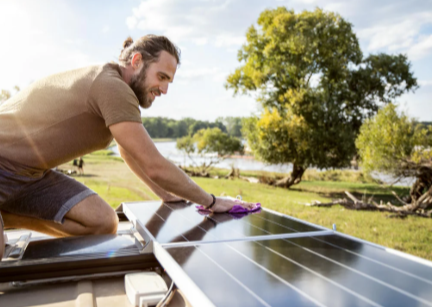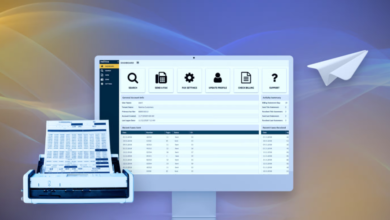Off-Grid Solar System Kit for Reliable Independent Power Anywhere

Imagine a cabin deep in the woods, a remote farm, or even an expedition vehicle crossing the desert—places far from utility grids, yet powered with confidence and stability. That’s the promise of an off-grid solar system kit: a portable, self-sustaining energy solution that operates independently from traditional power infrastructure. It’s not just about going green; it’s about reclaiming energy freedom.
Understanding the Anatomy of an Off-Grid Solar System Kit
At its core, an off grid solar system kit comprises all the components necessary to generate, store, and utilize electricity. These typically consist of:
- Solar Panels: Capture sunlight and convert it into direct current (DC) electricity.
- Charge Controller: Regulates the voltage and current from the panels to the batteries, preventing overcharging or deep discharge.
- Battery Bank: Stores energy for use when sunlight is unavailable, such as at night or on cloudy days.
- Inverter: Converts DC electricity stored in the batteries to alternating current (AC), which is used by most household appliances.
- Wiring and Mounting Hardware: Ensures the system is safely connected and properly installed.
Some kits also include backup generators, Bluetooth monitoring systems, and expandable ports for future upgrades. The plug-and-play nature of modern kits makes them accessible even to non-electricians.
Where Off-Grid Solar Kits Excel
Off-grid solar systems are not just about remote living. They cater to a variety of needs:
- Emergency Preparedness: In areas prone to blackouts, storms, or natural disasters, these systems provide essential backup power for communication devices, refrigeration, lighting, and medical equipment.
- Mobile Applications: RVs, boats, and camper vans use off-grid solar kits to stay powered on the move, eliminating the need for noisy, fuel-hungry generators.
- Sustainable Agriculture: Farms in remote locations can operate irrigation pumps, fence chargers, and even cold storage units entirely off-grid.
- International and Humanitarian Use: Off-grid solar kits are widely deployed in developing regions to power schools, clinics, and homes where access to utilities is either unreliable or nonexistent.
Performance in Challenging Environments
Modern off grid solar kit are designed to withstand harsh conditions. Panels are constructed with tempered glass and aluminum frames that resist corrosion and hail damage. Batteries often come in lithium iron phosphate (LiFePO4) variants, which are lighter, more efficient, and have a longer lifespan than traditional lead-acid types. With proper setup, these systems can handle extreme temperatures, high altitudes, and heavy usage with minimal maintenance.
Customization and Scalability
One of the greatest strengths of off-grid kits is their adaptability. Small kits might support just a few lights and a phone charger, while larger systems can power entire homes with multiple rooms, appliances, and HVAC systems. Homeowners or businesses can start with a basic system and expand it over time by adding more panels or battery capacity.
For example, a starter kit might include 1,000 watts of solar panels and a 2 kWh battery bank—enough to run lights, a laptop, and a refrigerator for several hours. Over time, additional panels and batteries can be added as energy needs grow.
Cost Considerations and Long-Term Value
While the upfront cost of a high-capacity off-grid system can be significant—ranging from a few hundred dollars for basic kits to several thousand for whole-house setups—it’s essential to view it as a long-term investment. Here’s why:
- Zero Monthly Bills: Once installed, your energy is free. There’s no meter, no provider, and no ongoing utility charges.
- Durability: Quality solar panels last 25 years or more. Lithium batteries can sustain thousands of cycles before degrading.
- Incentives: In many countries, off-grid solar system components qualify for tax credits, rebates, or grant programs.
Over a 10- to 15-year span, the total cost of ownership often proves to be significantly lower than relying on diesel generators or extending the electrical grid to remote areas.
Technological Advancements Shaping the Future
The off-grid solar industry is rapidly evolving. Here are a few trends that are making these systems even more powerful and user-friendly:
- Intelligent Monitoring: Many kits now include apps that show real-time energy production, battery status, and power usage. This helps users optimize their consumption and spot issues early.
- Modular Battery Systems: New designs allow users to hot-swap or daisy-chain battery packs, making storage upgrades seamless.
- Integrated Microinverters: Some systems bypass the centralized inverter altogether, utilizing microinverters on each panel to enhance safety and system efficiency.
- Hybrid Capabilities: Off-grid kits are increasingly being designed with hybrid options, allowing users to switch between solar, generator, and grid power if available.
Choosing the Right Kit for Your Needs
Selecting the right off-grid solar system depends on several factors:
- Energy Consumption: Start by calculating your daily energy usage in watt-hours. Prioritize essential appliances, such as refrigerators or medical devices.
- Sunlight Availability: Areas with consistent sunlight can utilize smaller systems; however, cloudy or high-latitude areas may require a larger panel surface.
- Portability: For RVs or temporary setups, weight and size are crucial. Look for foldable or suitcase-style panels.
- Battery Chemistry: Lithium batteries offer better performance and a longer lifespan, but lead-acid types are generally cheaper and sometimes easier to source locally.
Always consider future expansion—buying a slightly larger inverter or charge controller now can save money later when you decide to scale up.
See Also: Why Businesses Need Logistics Technology: Spotlight on Warehouse Management Systems
A Lifestyle Powered by the Sun
An off-grid solar system kit isn’t just a utility—it’s a gateway to independence, self-reliance, and environmental responsibility. Whether you’re aiming to reduce your carbon footprint, prepare for emergencies, or live on your terms, these kits make it possible to unplug from the grid without giving up modern comforts.
They’re more than an energy source—they represent a philosophy: harness what nature provides, use it wisely, and gain the freedom to thrive anywhere the sun shines.




